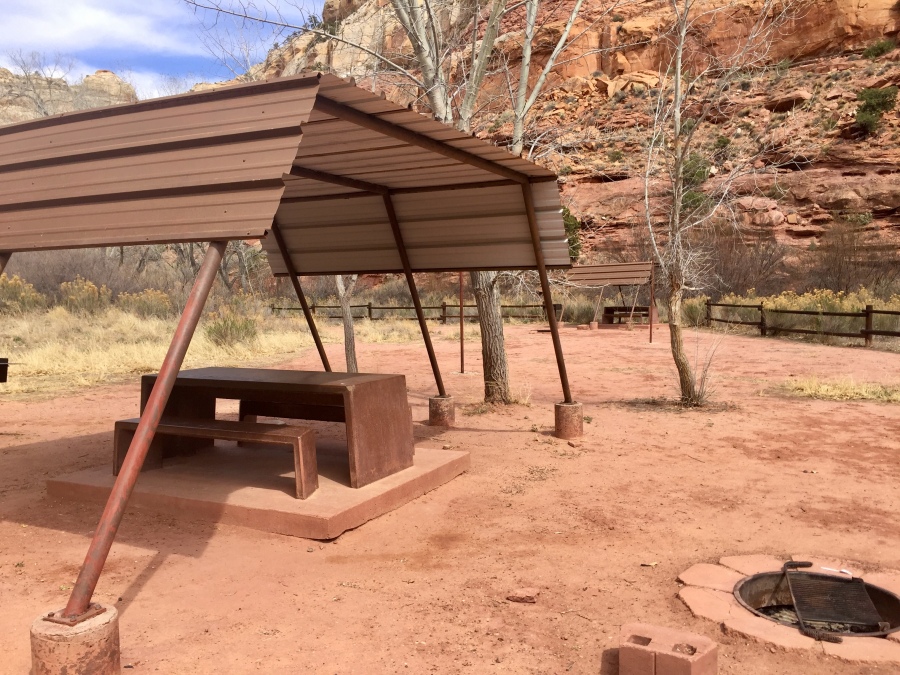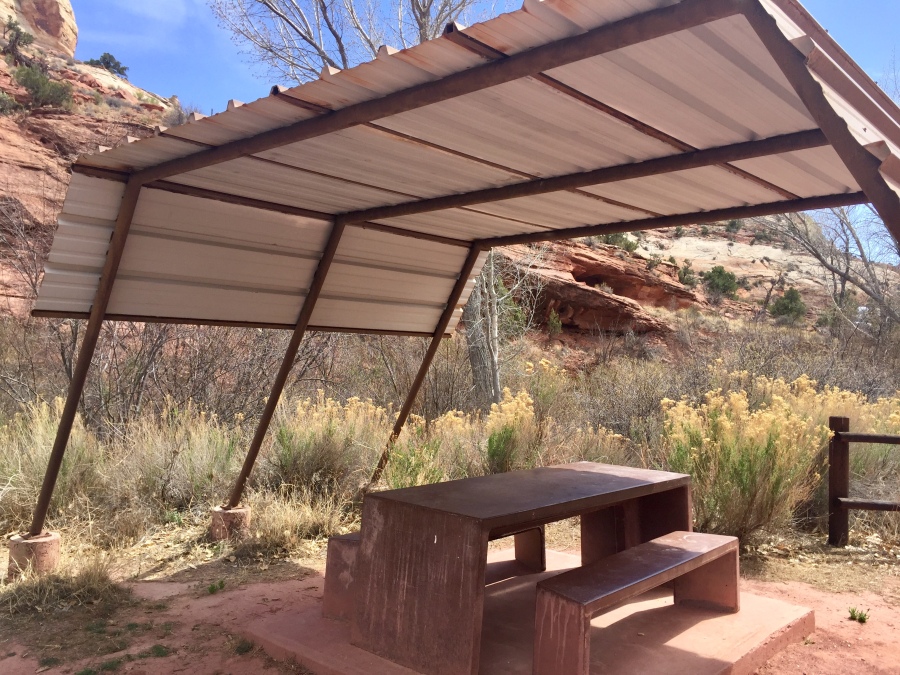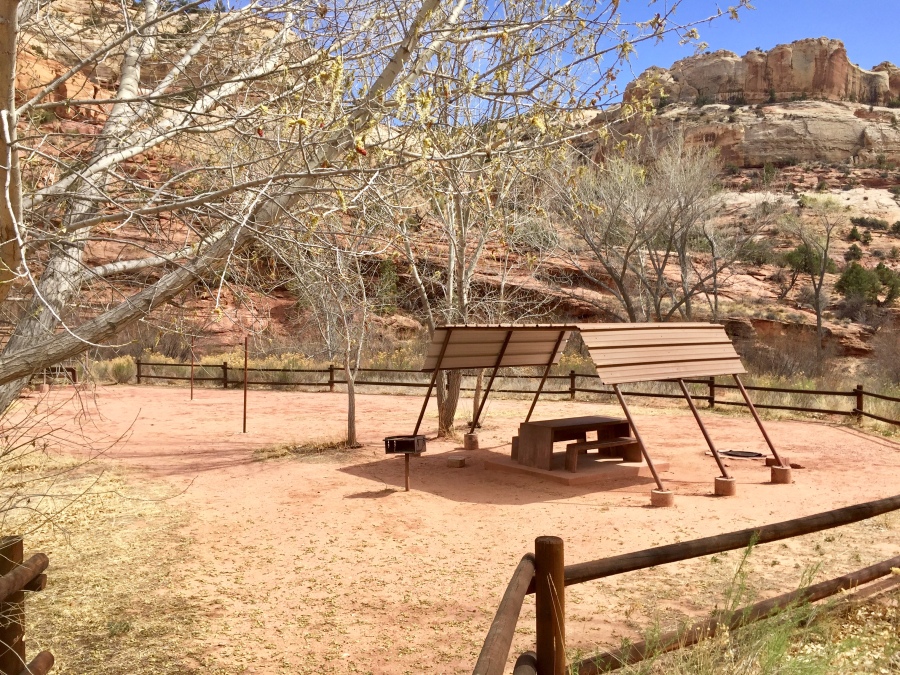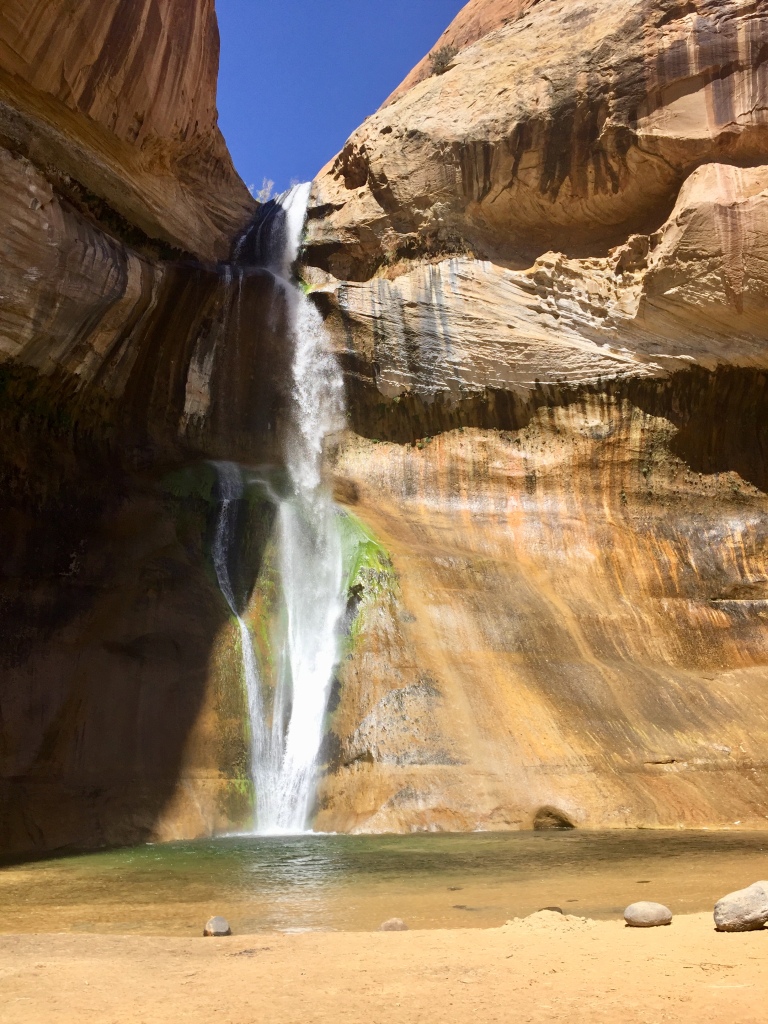

Roadside architecture, from motels to rest areas and campgrounds, is an architectural genre all its own. Much of this architecture corresponds directly with the growth of America’s highway system in the 1950s and 60s, and the popularization of the American road trip. It should come as no surprise that I’m endlessly intrigued by this topic: I grew up traveling rural highways of the American west and visiting National Parks with my geologist parents and roadside architecture has percolated to my blog (check out my favorite midcentury motel here and Seattle’s iconic Hat ‘n Boots here!).
A week ago I took a trip to southern Utah and found this great little picnic area at the Lower Calf Creek Falls trailhead in the beautiful Grand Staircase-Escalante National Monument. The picnic shelters are the perfect example of the function (shade) with some Midcentury design influences. Geometric shapes and simplicity were common in roadside architecture of this period (see more examples here). While highways were often undertaken at a federal level, and federal money was provided for “safety rest areas”, the design of roadside amenities was left to the states. While common traits can be seen in much of roadside architecture, this has led to an interesting diversity across the states. Some are more kitschy and many speak to their state’s history or reflect the surrounding environment. But all of them are interesting if you give them a second look.
As noted by Ryann Ford, author of The Last Stop: Vanishing Rest Stops of the American Roadside, “for those who traveled when these were built, it was about the journey, and not the destination.” (Quote via Curbed.)






Sources and Further Reading:
Check out my other pieces on roadside architecture:
Want to make the trip? The picnic area is located at the Lower Calf Creek Falls Trailhead (also a campground).
Historian Joanna Dowling has created an interesting and insightful website devoted to the history of rest areas. For more, visit Rest Area History.Org.
Curbed has a number of great articles on related topics:
For some great photographs of rest stops throughout the American west, take a look through Ryann Ford’s book, The Last Stop: Vanishing Rest Stops of the American Roadside (this is on my coffee table!).



On a recent family trip we stopped at a rest stop somewhere in Pennsylvania, on I-70 probably. It’s telling that I don’t actually know what road we were on. The rest stop tried to represent Pennsylvania well, but really, it and the road could have been anywhere out East. And I limit it to the East only because of the terrain, which was far hillier than out here in the flat, featureless Midwest.
As a kid in the 70s I remember rest stops in Indiana and especially Michigan that were even along the state highways. Frequently they were no more than a pulloff and a couple picnic tables, but at least they were something. They’re gone now.
LikeLike
That’s great! I wonder if rest areas today are more prevalent in the West because it’s still a long drive between cities, even with modern cars. Even so, I have rarely seen a newly built rest area!
LikeLike
You notice things I don’t. Thanks!! I will start paying attention to the structures at rest areas as well as the scenery.
LikeLike
I’m glad! I think rest areas suffer the same fate as many schools–the lack of funding has meant preservation is the default. So a lot of them are outdated, but they’re a great glimpse into design history!
LikeLike
What a fun little structure! It looks half organic, half futuristic — like something an alien civilization would build if they were eco-conscious. 🙂 Great post!
LikeLike
Thanks!! Your description of organic + futuristic is perfect. They’re stylish with a realistic twist 🙂
LikeLiked by 1 person
[…] After you read Susie Trexler‘s post about a roadside rest stop she found in Utah, you’ll forevermore consider the architecture of rest stops you use. Read The Architecture of Rural Rest Stops […]
LikeLike
[…] my recent visit to Bryce, I was drawn to a collection of historic cabins just south of the lodge. The cabins are […]
LikeLike